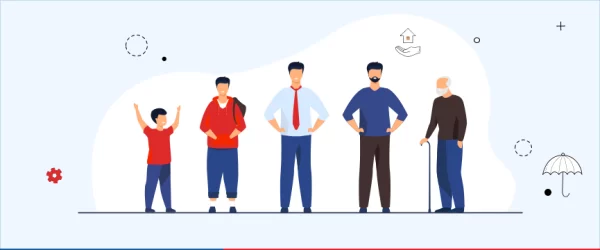Private Universities: Weighing Costs Against Benefits
For many juniors and seniors, picking the ideal college can be quite overwhelming. In the state of Florida, this decision can prove to be even more challenging due to the plethora of different types of universities prospective students can choose from and the forms of financial aid Florida students can receive.
One may ask, what is the difference between enrolling in a private college and a state college? The most obvious answer lies in tuition costs. For example, to attend a local university such as Florida Atlantic University (FAU), tuition would cost $5,432 a year; however, to attend a private university like Harvard University runs a whopping $46,340 a year. The difference in price is so drastic that it can affect a student’s choice in picking a college, since many students find it unfavorable to go into debt. The reason for this dramatic difference in price is due to the fact that public universities collect a large portion of their operating funds from federal and local state governments. This enables them to make tuition more affordable to students, particularly to in-state students.
Another benefit of going to a public college is that in the state of Florida, students who currently have an high GPA, the required number of community service hours, and high scores on the SAT or ACT are eligible to receive the Florida Bright Futures scholarship, which in some cases can cover up to 100 percent of a student’s college tuition. The catch is it only applies to Florida universities. Private universities in the state of Florida tend to not accept the full value of the scholarship. The University of Miami (UM) will take the value of Bright Futures at a state school and allow one to apply it their tuition; for example, if tuition was $5,000 a year at a local state school, students can put that amount towards their almost $48,720 a year tuition.
Additionally, acceptance rates for state universities often are higher than those of private ones. Private universities usually exercise a strict control in the quality and quantity of students that they admit into their programs. Their campuses are usually smaller, and their acceptance rates are particularly low as juxtaposed against their public-school counterparts. To illustrate, the acceptance rate at UM is 38 percent; whereas, the acceptance rate at Florida State University (FSU) is 56 percent. It is evident that private colleges tend to be more selective in choosing their student body, and in many cases, an incoming college freshman has a better chance at being accepted into a state school than a private one.
Looking past the high tuition fees, there are several advantages of enrolling in a private university that don’t necessarily meet the eye. Foremost, one of the most important bonuses of attending a private college is the small class sizes. Private universities such as Yale University have a total enrollment of 12,385 students. One of the benefits of minimal enrollment sizes is that it usually means much smaller student to teacher ratios. For example, Massachusetts Institute of Technology (MIT) has a student-faculty ratio of 3:1, and UM has a 12:1 ratio. On the other hand, UCF, the largest state university in Florida, has 66,183 students with a 31:1 student-faculty ratio.
A smaller class size matters because it allows a student to develop relationships with his/her professors, and it makes it less likely for a student to become lost in the crowd. Increased interaction with professors can result in lasting relationships with professors that can help provide long-term professional benefits through job recommendations, career advice and assistance in landing an internship or entry-level job. At private colleges, professors are given the opportunity to get to know their students, whereas at a massive state schools with large student capacities, such as UCF and the University of Florida (UF), this may not be as true.
With smaller class sizes, professors have more opportunities to spend time with their students to make sure they meet their academic goals. Access to professors in state schools may be limited, since each of the professors has hundreds of students. Therefore, if a student tries to reach them when they need assistance after class, it can be difficult, especially since the professors may be unfamiliar with that student.
Furthermore, it is more difficult for students to get lost in the crowd at a private university. If they are introverted or less inclined to join student organizations, students at a larger state school are at a higher risk of feeling lonely or isolated. It is more likely for this to occur at a huge state school where classes are large and the number of students range in the tens of thousands.
In addition to smaller class sizes, less student enrollment can make it easier for one to acclimate to college life and gain friendships quicker and easier. With a smaller student body and a more intimate campus, it is less challenging for students to get to know the people around them, and it’s also less difficult to take leadership roles on campus. This makes for a close-knit community of students and teachers and an excellent environment for students who need that extra attention.
Keeping into account the hefty amounts of money it costs to attend private schools, research shows students are more likely to graduate from private nonprofit colleges, and they’re more likely to do so on schedule (in four years), according to statistics from The Chronicle of Higher Education. As for not-for-profit private colleges, 80.7 percent of students complete their degrees in four years as opposed to 57.8 percent for public universities. This is a key factor in determining college costs, because taking longer than four years to earn a degree equates to extra costs in tuition, fees, room and board. It can also mean more student loan interest and a delay in professional earnings.
There are however, many state schools throughout Florida that offer honors programs within their systems. FAU, for example, has its own honors campus located in Abacoa, about an hour away from its main campus in Boca Raton. Here, one can find many of the features of a private college such as small class sizes and selectivity coming with the state school price.
All things considered, picking the ideal college can be one of the most difficult ultimatums of life. However, it is important to weigh all the options available and come to a comfortable decision that best suits you.











